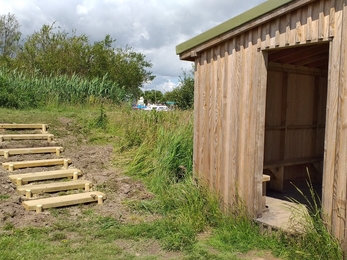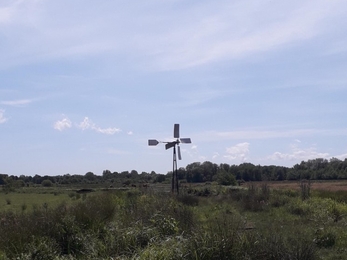Wildlife will be thankful as the now rainy July washes away all memory of the hot June weather. When the sun comes out again walking along the river walls at Carlton, Oulton and Castle Marshes is a great way to spot butterflies. The skippers are now on the wing, look out for large skippers which can be distinguished from the essex and small skippers by their dark chequered wing markings. Large skippers are one of the many butterfly species which depend on common grasses for their survival, which is why 'messy' areas are so important on nature reserve as well as in your garden.
Gunton Meadow will be especially grateful for this rainy spell, as this year Gunton Meadow is looking a bit sorry for itself with wizened looking orchids and heat scorched agrimony. However, the fen plants at Oulton and Carlton are fine in the squelchy peat. Bog pimpernel is a favourite plant of mine which is now in flower, carpeting the ground throughout Sprat's Water. North Cove nature reserve, which is now managed by the Beccles birds society, is another great place to spot this beautiful plant. The tidal reedbed at Carlton Marshes is covered in marsh pea, a rare plant of wetlands. These wetland areas are home to such a huge diversity of plant species it really is amazing and just as spectacular as the birds!
It continues to be a successful first year for our breeding waders out on Peto's Marsh. 6 avocet chicks have fledged on the scrape in front of one of the new hides on Peto's Marsh. They have all now learnt the difficult avocet feeding technique, scything their bills through the water to collect insects and crustaceans. This technique is unique to avocet species and uniquely difficult for young birds to learn, making for amusing watching as they make their first clumsy attempts. Another species which had been very successful this year is the chinese water deer, whose gorgeous fawns have been a favourite subject of local photographers. If you spot a chinese water deer out on the marshes stop and wait, you might be delighted by the sight of a tiny fawn trotting along in the rushes.









